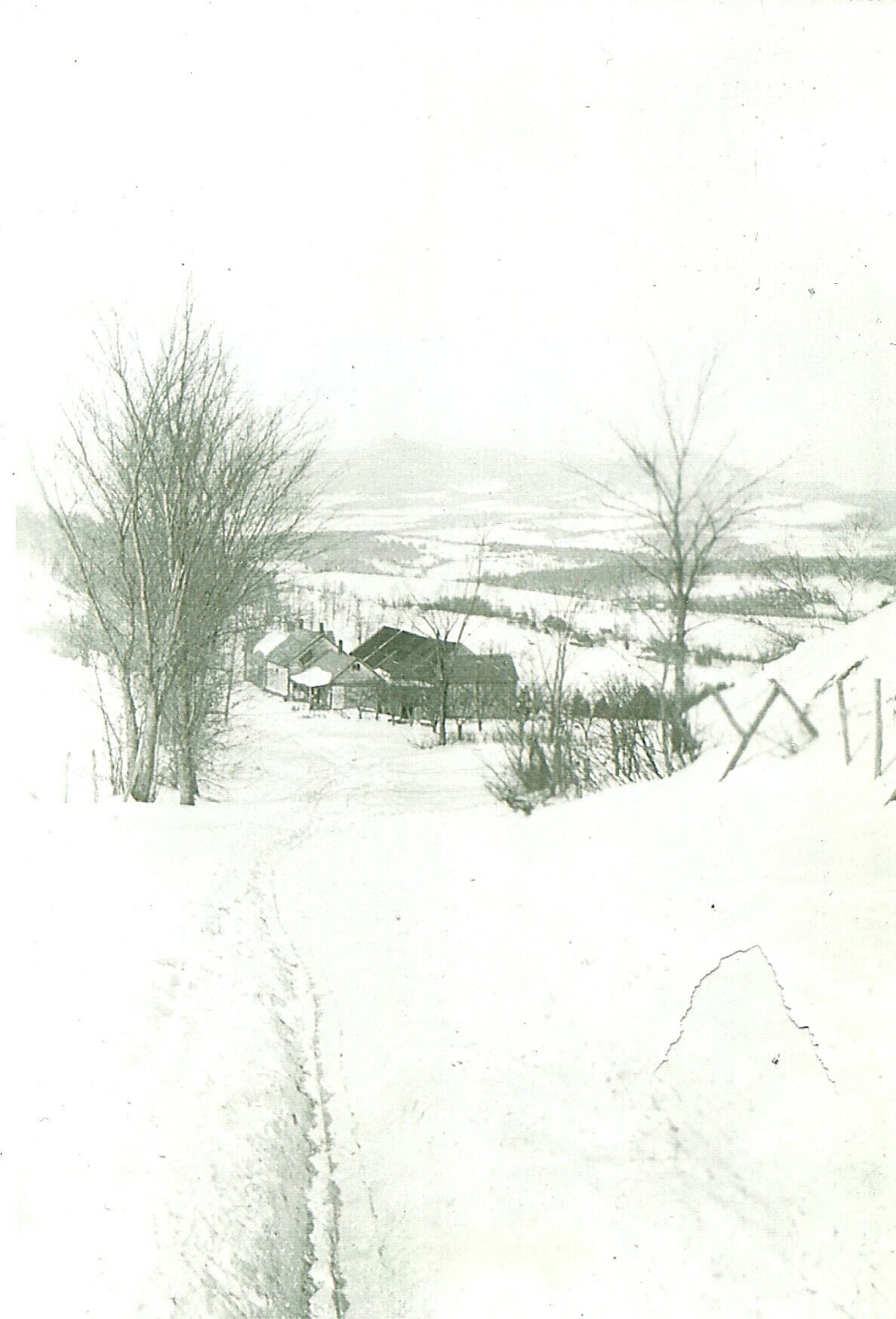Farms
The earliest residents farmed a portion of their land sufficient to “get through the year.” As they were able to clear additional land, salts and lye were made from the burning the unusable wood. The salts were the first cash crop. Mereno sheep were introduced to Vermont, about 1815. The sheep craze and creation of more upland pasture lasted into the mid 1850’s t early 1860’s. The use of pasture land transitioned to dairy farming. By the 1870’s more than half the mills were making butter and cheese tubs. Butter from Stowe and empty tubs were shipped to larger markets such as Boston, Albany and New York. In 1890’s maple sugar and other maple products were added to farming for export. At least one of the mills converted to making boxes for maple sugar and packaging plus shipping began. Although milk was being exported from Vermont in the late 1800’s, 1925 is when the first recorded shipment from Stowe took place. There was a growth in farm output and mergers through the 1940’s. In the 1950’s, when broadened sanitation regulations were imposed and bulk tanks required a number of farmers left dairy farming. Again at the time of the whole herd buy-out in the l990’s the number of independent farms shrank. Since then some farms were used for raising horses, others for raising vegetables and others returned to raising the grains of the early 1800’s. In 21th century we have several commercial dairy farmers, several maple product producers and a few specialty item vegetable and herb producers.
Grassland Farm
The Titus family arrived in Stowe in 1922 from northern New York. The farmhouse is on Upper Hollow Road near the intersection with Pinnacle Road. Several sons acquired their own farms in the Stowe Hollow area in the early 1940’s.
Floyd Titus/ Dr. Zuber Farm
984 North Hollow Road from the 1970's through 2019 this farm was known for its abundance of blueberries. Unfortunately, the house and barn have been removed.
C. Lang Farm
Charlie Lang’s house Stowe Hollow Road c 1940.
Corner of No. Hollow & Titus Hill Road, now Upper Hollow Road
.Ell Titus farmhouse until 1947 when he move into a newly constructed home in Stowe Village. Each had land across North Hollow Road to farm.
Raymond Gibbs Farm c 1950 Stowe Hollow
Raymond Gibbs’ father moved to Stowe from Chateaugay NY in 1922.
Arthur Doan Farm Stowe Hollow
This unusual six sided barn in south Stowe Hollow. Note the woodpile to the left of the barn, Nearby was a sugarhouse.






